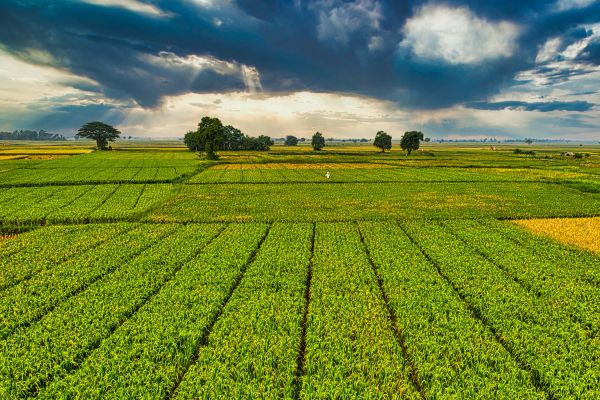Grape crop insurance plays a pivotal role in safeguarding the livelihoods of vineyard owners and ensuring the stability of the grape industry. As agriculture faces increasing uncertainties due to climate change and other factors, the need for a reliable safety net has become more apparent.
In this article, we look into the intricacies of grape crop insurance, exploring its benefits, key features, eligibility criteria, and the role of the government in supporting this vital aspect of agriculture.
Grape Crop Insurance
Grape crop insurance is a federally subsidized program that is administered by the USDA Risk Management Agency. Policies are sold by independent agents and agencies throughout the country. There are thirteen approved insurance providers (insurance companies) that work with the USDA RMA.
Grape crop insurance is an Actual Production History (APH) policy. This means that it uses a vineyard’s historical production to determine how much is covered. You are covering an average of your tons per acre per variety. Since crop insurance is partially subsidized, the insurable varieties, prices per ton, premiums are all set by the USDA.
This also means that there is no cost difference from one insurance company to the next. If anyone represents that they can get you a lower premium for the same coverage, it is false. It is true that some agents and agencies are more knowledgeable with grape crop insurance. How your policy is set up and with what endorsements you have does make a difference.
Per the Grape Crop Provisions grape crop insurance covers you for the following:
Causes of Loss
(a). In accordance with the provisions of section 12 of the Basic Provisions, insurance is provided only against the following causes of loss that occur during the insurance period:
1. Adverse weather conditions
2. Fire, unless weeds and other forms of undergrowth have not been controlled or pruning debris has not been removed from the vineyard
3. Insects, except as excluded in 10(b)(1), but not damage due to insufficient or improper application of pest control measures
4. Plant disease, but not damage due to insufficient or improper application of disease control measures
5. Wildlife
6. Earthquake
7. Volcanic eruption
8. Failure of irrigation water supply, if caused by an insured peril that occurs during the insurance period
(b) In addition to the causes of loss excluded in section 12 (Causes of Loss) of the Basic Provisions, we will not insure against damage or loss of production due to:
1. Phylloxera, regardless of cause
2. Inability to market the grapes for any reason other than actual physical damage from an insurable cause specified in this section. For example, we will not pay you an indemnity if you are unable to market due to quarantine, boycott, or refusal of any person to accept production.
Benefits of Grape Crop Insurance
Financial Security for Farmers
One of the primary benefits of grape crop insurance is the financial security it provides to farmers. In the event of crop failure or damage, insurance payouts help mitigate the economic impact, allowing farmers to recover and continue their operations.
Mitigating Risks in Grape Farming
Grape farming involves significant financial investments, and the risks associated with uncertainties in weather and market conditions can be daunting. Crop insurance serves as a crucial tool for mitigating these risks, fostering resilience in the agricultural sector.
How to apply for grape coverage
To apply, please make an appointment with a Production Insurance representative.
Review the following forms to prepare the application. These forms don’t need to be filled out prior to the appointment and can be completed with the assistance of a representative.
- Application for Continuous Production Insurance (Schedule A)—available from the Production Insurance office.
- Tax Reporting Form (Schedule A-1) (PDF)
- Land Inventory (Schedule L-1) If the land is leased or rented, a legal lease or rental agreement must be submitted with your application. (PDF)
- Farm Map(s) (Schedule L-2) (PDF)
- Warranties (Schedule W-1) (PDF)
- Grape Field Inventory (Schedule F-4) (PDF)
- Grape Land and Vineyard Update Form (Schedule U-5) (PDF)
- File a Notice of Loss (PDF)
Coverage, options and premiums
After the offer is written, we’ll send an Offer Statement of Premiums and Coverage (SPC), and an Options Report which details available coverage, options and premiums. Contact us for assistance in choosing coverage, options and premiums.
Yield loss
- The 50% deductible (minimum) is the lowest amount of coverage available and means over half the crop must be lost before a claim is paid. It may not be enough to protect an operation and there is no opportunity to increase the value.
- The 20 or 30% deductibles protect a larger portion of the crop and allows an increase in the value of coverage.
If you choose the 20 or 30% deductible, you may elect to increase the value of the crop. Select the value to insure the crop for (up to the maximum calculated value).
Grape vine loss coverage
- The 5% deductible (minimum) is the lowest amount of coverage available and means 5% of vines must be lost before a claim is paid.
- The 1% deductible protects a larger portion of vines.
You may elect to increase the value you are insuring vines for from 80% to 100% of the (calculated) value. The 100% (calculated) value increases the amount vines are insured for.
Conclusion
Grape crop insurance stands as a pillar of support for vineyard owners, offering financial security in the face of unpredictable challenges. As the agriculture sector navigates uncertainties, the role of insurance in fostering resilience and sustainability cannot be overstated. By embracing the benefits of grape crop insurance and addressing challenges collaboratively, the industry can look forward to a future of stability and growth.
FAQs About Grape Crop Insurance
1. Is grape crop insurance mandatory for all vineyard owners?
Grape crop insurance is typically not mandatory, but it is highly recommended for all vineyard owners to protect against potential financial losses.
2. What factors should grape farmers consider when choosing insurance coverage?
Grape farmers should consider factors such as weather patterns, pest risks, and the size of their vineyards when choosing the right coverage for their specific needs.
3. Do government subsidies vary by region for grape crop insurance?
Yes, government subsidies for grape crop insurance may vary by region, and farmers should check with local agricultural authorities for specific details.
4. Can grape crop insurance cover losses due to market fluctuations?
Some grape crop insurance policies may include coverage for market fluctuations, providing additional financial security for farmers.
5. How can technology play a role in the future of grape crop insurance?
Technology, such as remote sensing and data analytics, can enhance the accuracy of risk assessments and streamline the claims process, shaping the future of grape crop insurance.






